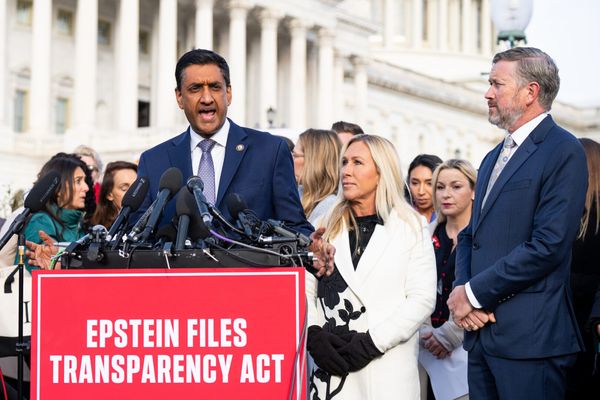
If bills feel pricey now, buckle up and prepare for 2026 — your bills will likely go up even more, at least some of them.
Check Out: New Law Could Make Electricity Bills Skyrocket in These 4 States
Read Next: 10 Unreliable SUVs To Stay Away From Buying
The bills most likely to go up in 2026? Energy related. To get ahead of possible price hikes, you might want to start cutting now, or trimming usage to stay financially ahead next year. Two experts explained how to go about this.
Why Will Energy Prices Go Up?
Energy affordability is a real concern for families already feeling the pinch from inflation, and it’s likely to get more expensive, especially electricity, according to according to Owen Quinlan, head of data for Arbor, who draws his data from the Federal Reserve and Bureau of Labor Statistics.
While he pointed out that electricity prices have been on a steady rise since 2004, over 111% — faster than rent and groceries — “Over the past year alone, [prices] are up 5.5%, more than twice the rate of overall inflation.”
Drivers of demand include “AI data centers, EV charging and extreme summer heat,” he explained, which are putting unprecedented strain on the grid.
Be Aware: 4 Surprising Things That Could Impact Your Wallet If a Recession Hits
Punishing the Little Guy
The downside of the huge demand on energy is that energy resources “are being allocated in a way that punishes households and small businesses while letting large industrial users avoid the worst of it,” Quinlan said.
“Our grid isn’t failing because we don’t have enough energy. It’s failing because we aren’t using the energy we have smartly.”
However, the good news is that “energy efficiency remains one of the most impactful and accessible strategies homeowners can use to take control of their utility bills,” according to Paul Hines, vice president of power systems at EnergyHub.
Energy-efficient improvements such as upgraded insulation, high-efficiency appliances and LED lighting can reduce a home’s baseline energy use and potentially lower costs.
Expect Higher Electric Bills
Of your energy bills, electricity is “the standout risk for the second half of 2025 and into 2026,” Quinlan said, because “unlike streaming or discretionary goods, you cannot cancel your power bill.”
Electricity’s affordability is affected by a variety of factors, such as “long-term upward price pressure with sudden spikes from heatwaves, supply crunches and market auctions.”
Deregulated States: Lock in a Better Rate
While you can’t quit your electric bill altogether, as Quinlan said, those who live in deregulated states can check to see if they’re paying a “supply charge” on their bills. “If it changes month to month, you are likely on a variable plan and could lock in a better fixed rate,” Quinlan explained.
Many households never shop for a better electricity rate, he said, which can be “a costly mistake.” He’s seen customers paying 50 to 60 cents per kWh when the average should be closer to 10 cents. “That is a $400 difference on a typical 1,000 kWh bill.”
Regulated States: Shift Usage
In regulated states, ask your utility if you are on the most cost-effective plan, such as time-of-use pricing that rewards shifting demand to off-peak hours, Quinlan urged.
“Outside of energy, trim recurring subscriptions you do not use, renegotiate your internet and insurance rates and downgrade service tiers you do not need.”
Community Solar Subscriptions
Community solar subscriptions are another overlooked opportunity to lower rates, Quinlan shared. “In participating states, you can subscribe to a share of a solar farm and receive credits on your bill, often guaranteeing 5% to 10% monthly savings without installing anything.”
Create Efficiency With Smart Tech
Hines explained that you can also supercharge cuts when you pair shifting consumption away from peak times “with smart, responsive technologies … like smart thermostats, batteries and automated energy management systems” to optimize when and how energy is used.
Any costs spent upfront will pay off in spades over time.
Utility-Led Demand Response Programs
Additionally, some states or municipalities may have utility-led demand response (DR) programs, Hines said.
“DR programs compensate households for temporarily reducing or shifting their energy use during peak demand periods.” In return, participants receive bill credits or financial rewards.
Disconnect Energy Vampires
However, it’s also important not to underestimate the impact of everyday “energy vampires” such as electronics and appliances that draw power even when turned off.
“Simple actions like unplugging unused devices or using smart power strips can help eliminate that hidden load and amplify your overall efficiency gains,” Hines said.
Look for Rebates and Incentives
Lastly, though many federal tax credits are phasing out, Hines pointed out that many utilities also offer rebates and incentives to make energy-smart technologies more affordable.
More From GOBankingRates
- 6 Costco Products That Have the Most Customer Complaints
- This is the Most Frugal Generation (Hint: It's Not Boomers)
- I'm a Retired Boomer: 6 Bills I Canceled This Year That Were a Waste of Money
- 7 Tax Loopholes the Rich Use To Pay Less and Build More Wealth
This article originally appeared on GOBankingRates.com: Your 2026 Bills Will Likely Go Up — Here’s What To Cut First







